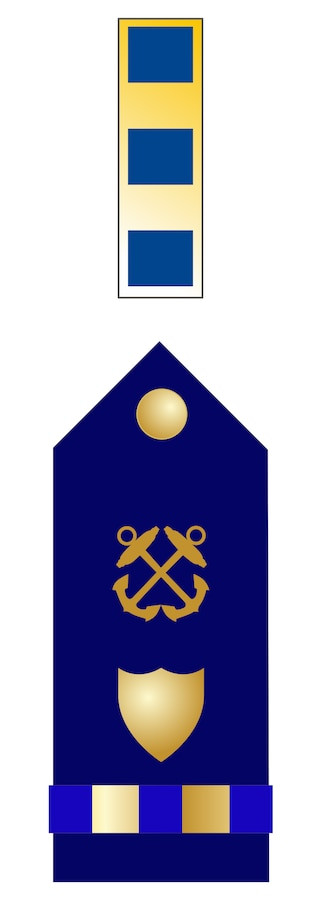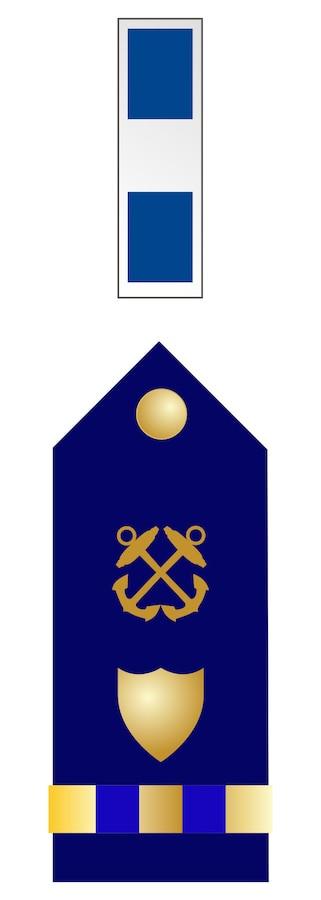Military rank in the U.S. Armed Forces signifies more than just a hierarchy; it embodies leadership, responsibility, and a service member’s role within their branch. As personnel advance, so does their accountability for individuals, equipment, and mission success. Understanding these ranks is crucial for anyone interacting with or interested in the military. It’s important to distinguish between rank and paygrade, such as E-1, W-2, and O-5. Paygrades are administrative tools used to standardize compensation across different military branches. The letter prefixes (E for enlisted, W for warrant officers, and O for commissioned officers) denote pay categories, while the number indicates the specific pay level within that category. While paygrades standardize compensation, rank denotes the level of authority and responsibility a service member holds, and is visually represented on their uniforms through insignia.
Enlisted Rank Insignia
Officer Rank Insignia
Enlisted Rank Insignia
Enlisted service members, forming the backbone of the U.S. military, progress through a structured rank system marked by distinct insignia. These ranks are categorized by paygrades, starting from E-1 to E-9, each signifying increasing levels of experience, leadership, and responsibility. The initial paygrades, E-1 through E-3, typically represent those in training or at the beginning of their military careers. This phase includes basic training, where recruits adapt to military life, values, and fundamental skills specific to their service. Following basic training, service members undergo specialized training to gain expertise in a particular field. This specialization is known as a Military Occupational Specialty (MOS) in the Army and Marine Corps, a rate in the Navy, and an Air Force Specialty Code (AFSC) in the Air Force and Space Force. The insignia worn on their uniforms clearly indicates their rank and branch.
| Enlisted Paygrade | Army | Marine Corps | Navy | Air Force | Space Force | Coast Guard |
|---|---|---|---|---|---|---|
| E-1 | Private | Private | Seaman Recruit (SR) | Airman Basic | Specialist 1 (Spc1) | Seaman Recruit (SR) |
| E-2 | Private (PV2) | Private First Class (PFC) | Seaman Apprentice (SA) | Airman (Amn) | Specialist 2 (Spc2) | Seaman Apprentice (SA) |
| E-3 | Private First Class (PFC) | Lance Corporal (LCpl) | Seaman (SN) | Airman First Class (A1C) | Specialist 3 (Spc3) | Seaman (SN) |
| E-4 | Corporal (CPL) Specialist (SPC) | Corporal (Cpl) | Petty Officer Third Class ** (PO3) | Senior Airman (SrA) | Specialist 4 (Spc4) | Petty Officer Third Class ** (PO3) |
As enlisted personnel advance into mid-level ranks, leadership responsibilities significantly broaden. This increased responsibility is formally acknowledged with the designation of Noncommissioned Officer (NCO) in the Army, Air Force, and Marine Corps, and Petty Officer in the Navy and Coast Guard. An Army Sergeant, Air Force Staff Sergeant, and Marine Corporal are all recognized as NCO ranks. In the Navy and Coast Guard, the equivalent NCO status begins at Petty Officer Third Class. These ranks are clearly displayed on their uniforms, signifying their elevated position and leadership role.
| E-5 | Sergeant (SGT) | Sergeant (Sgt) | Petty Officer Second Class ** (PO2) | Staff Sergeant (SSgt) | Sergeant (Sgt) | Petty Officer Second Class ** (PO2) |
| E-6 | Staff Sergeant (SSG) | Staff Sergeant (SSgt) | Petty Officer First Class ** (PO1) | Technical Sergeant (TSgt) | Technical Sergeant (TSgt) | Petty Officer First Class ** (PO1) |
| E-7 | Sergeant First Class (SFC) | Gunnery Sergeant (GySgt) | Chief Petty Officer ** (CPO) | Master Sergeant (MSgt) First Sergeant | Master Sergeant (MSgt) | Chief Petty Officer ** (CPO) |
At the E-8 and E-9 levels, the military structure further distinguishes roles within the same paygrade. For instance, in the Air Force, an E-8 can be either a Senior Master Sergeant or a First Sergeant, depending on their specific duties and responsibilities. Similarly, at the E-9 level, Marine Corps Master Gunnery Sergeants and Sergeants Major hold equal paygrades but have distinct responsibilities. E-8s and E-9s are seasoned leaders with 15 to 30 years of service, acting as senior advisors to commanders on enlisted matters. The highest enlisted rank in each service branch is held by a senior enlisted leader – the Sergeant Major of the Army, Sergeant Major of the Marine Corps, Master Chief Petty Officer of the Navy, Chief Master Sergeant of the Air Force, and Chief Master Sergeant of the Space Force, and Master Chief Petty Officer of the Coast Guard. These individuals serve as the voice of the enlisted force at the highest levels of their respective branches. Their rank insignia, prominently displayed on their uniforms, reflects their vast experience and leadership within the US military branches.
| E-8 | Master Sergeant (MSG) First Sergeant (1SG) | Master Sergeant (MSgt) First Sergeant | Senior Chief Petty Officer ** (SCPO) | Senior Master Sergeant (SMSgt) First Sergeant | Senior Master Sergeant (SMSgt) | Senior Chief Petty Officer ** (SCPO) |
| E-9 | Sergeant Major (SGM) Command Sergeant Major (CSM) | Master Gunnery Sergeant (MGySgt) Sergeant Major (SgtMaj) | Master Chief Petty Officer ** *** (MCPO) Fleet/Command Master Chief Petty Officer ** *** | Chief Master Sergeant (CMSgt) First Sergeant Command Chief Master Sergeant | Chief Master Sergeant (CMSgt) | Master Chief Petty Officer ** *** (MCPO) Fleet/Command Master Chief Petty Officer ** *** |
| E-9
Senior Enlisted Leaders | Sergeant Major of the Army (SMA) | Sergeant Major of the Marine Corps (SgtMajMC) | Master Chief Petty Officer of the Navy (MCPON) | Chief Master Sergeant of the Air Force (CMSAF) | Chief Master Sergeant of the Space Force (CMSSF) | Master Chief Petty Officer of the Coast Guard (MCPOCG) |
Army: * For rank and precedence within the Army, specialist ranks immediately below corporal. Among the services, however, rank and precedence are determined by paygrade.
Navy / Coast Guard: * A specialty mark in the center of a rating badge indicates the wearer’s particular rating. ** Gold stripes indicate 12 or more years of good conduct. *** 1. Master chief petty officer of the Navy and fleet and force master chief petty officers. 2. Command master chief petty officers wear silver stars. 3. Master chief petty officers wear silver stars and silver specialty rating marks.
Coast Guard: The Coast Guard operates under the Department of Homeland Security during peacetime and transitions to the Department of the Navy during wartime. Notably, Coast Guard rank insignia mirror those of the Navy, primarily differing in color, with the exception of the Seaman Recruit rank which features a single stripe on the uniform.
Moving beyond the enlisted ranks, the U.S. military also encompasses officer categories, each with its own distinct hierarchy and insignia.
Officer Rank Insignia
Officer ranks in the U.S. military are divided into warrant officers and commissioned officers. Warrant officers are specialists in specific technical fields, holding warrants issued by their service secretary. Upon promotion to Chief Warrant Officer 2, they receive presidential commissions, signifying their direct representation of the President. Commissioned officers, the highest ranks in the military, hold presidential commissions confirmed by the Senate. They are broadly categorized: company grade officers (O-1 to O-3), field grade officers (O-4 to O-6), and general officers (O-7 and higher) in the Army, Air Force, and Marine Corps. The Navy equivalent groupings are junior grade, mid-grade, and flag officers. Interestingly, the Air Force does not utilize warrant officers, streamlining its officer structure to commissioned ranks. The insignia for officers varies depending on the uniform type, especially in the Navy, which utilizes collar insignia pins for khakis, shoulder board stripes for whites, and sleeve stripes for blues. These insignia are critical for immediate visual recognition of an officer’s rank and authority within the diverse uniforms of the US military branches.
| Officer Paygrade | Army | Marine Corps | Navy | Air Force | Space Force | Coast Guard |
|---|---|---|---|---|---|---|
| W-1 | Warrant Officer 1 WO1 | Warrant Officer 1 WO | USN Warrant Officer 1 WO1 | N/A | N/A | N/A |
| W-2 | Chief Warrant Officer 2 CW2 | Chief Warrant Officer 2 CWO2 | USN Chief Warrant Officer 2 CWO2 | N/A | N/A | Chief Warrant Officer 2 CWO2  W-2 Chief Warrant Officer 2 W-2 Chief Warrant Officer 2 |
| W-3 | Chief Warrant Officer 3 CW3 | Chief Warrant Officer 3 CWO3 | USN Chief Warrant Officer 3 CWO3 | N/A | N/A | Chief Warrant Officer 3 CWO3  W-3 Chief Warrant Officer 3 W-3 Chief Warrant Officer 3 |
| W-4 | Chief Warrant Officer 4 CW4 | Chief Warrant Officer 4 CWO4 | USN Chief Warrant Officer 4 CWO4 | N/A | N/A | Chief Warrant Officer 4 CWO4  W-4 Chief Warrant Officer 4 W-4 Chief Warrant Officer 4 |
| W-5 | Chief Warrant Officer 5 CW5 | Chief Warrant Officer 5 CWO5 | USN Chief Warrant Officer 5 CWO5 | N/A | N/A | N/A |
| O-1 | Second Lieutenant 2LT | Second Lieutenant 2ndLt | Ensign ENS | Second Lieutenant 2d Lt | Second Lieutenant 2d Lt | Ensign ENS |
| O-2 | First Lieutenant 1LT | First Lieutenant 1stLt | Lieutenant Junior Grade LTJG | First Lieutenant 1st Lt | First Lieutenant 1st Lt | Lieutenant Junior Grade LTJG |
| O-3 | Captain CPT | Captain Capt | Lieutenant LT | Captain Capt | Captain Capt | Lieutenant LT |
| O-4 | Major MAJ | Major Maj | Lieutenant Commander LCDR | Major Maj | Major Maj | Lieutenant Commander LCDR |
| O-5 | Lieutenant Colonel LTC | Lieutenant Colonel LtCol | Commander CDR | Lieutenant Colonel Lt Col | Lieutenant Colonel Lt Col | Commander CDR |
| O-6 | Colonel COL | Colonel Col | Captain CAPT | Colonel Col | Colonel Col | Captain CAPT |
| O-7 | Brigadier General BG | Brigadier General BGen | Rear Admiral Lower Half RDML | Brigadier General Brig Gen | Brigadier General Brig Gen | Rear Admiral Lower Half RDML |
| O-8 | Major General MG | Major General MajGen | Rear Admiral Upper Half RADM | Major General Maj Gen | Major General Maj Gen | Rear Admiral Upper Half RADM |
| O-9 | Lieutenant General LTG | Lieutenant General LtGen | Vice Admiral VADM | Lieutenant General Lt Gen | Lieutenant General Lt Gen | Vice Admiral VADM |
| O-10 | General GEN | General Gen | Admiral ADM | General Gen | General Gen | Admiral ADM |
| O-11
Wartime Rank | General of the Army (Reserved for wartime only) | N/A | Fleet Admiral (Reserved for wartime only) | General of the Air Force (Reserved for wartime only) |
Understanding U.S. military ranks and insignia is key to appreciating the structure and hierarchy within each branch. These visual cues on military uniforms are not merely decorative; they represent years of dedication, training, leadership, and commitment to service. Whether you are looking to identify personnel, understand military protocols, or simply learn more about the US Armed Forces, this guide to rank insignia serves as a valuable resource.
Understanding Rank Insignia
- Paygrade: The administrative level used for compensation standardization.
- Service: The specific branch of the U.S. Military (Army, Marine Corps, Navy, Air Force, Space Force, Coast Guard).
- Rank: The specific title and level of responsibility within a paygrade and service, visually represented by the insignia on the uniform.

